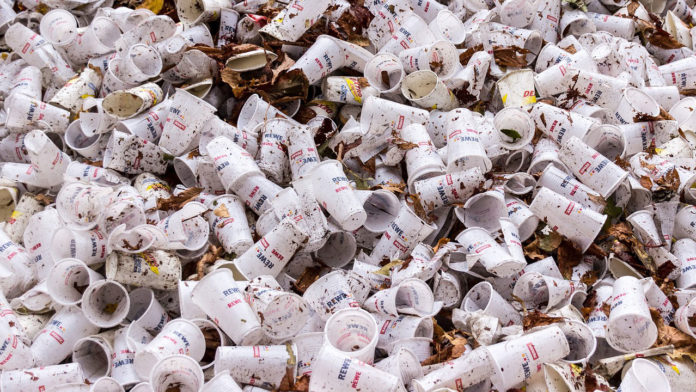Around 100 million tons of multilayer thermoplastics are produced globally every year. 40% of that total is waste from the manufacturing process itself, and because there has been no way to separate the polymers, practically the entirety of that plastic ends up in landfills or incinerators.
Now, the University of Wisconsin–Madison engineers have engineered a method for reclaiming the polymers in these materials using solvents. Scientists dubbed this technique as Solvent-Targeted Recovery and Precipitation (STRAP) processing.
The method separates the polymers in a commercial plastic composed of common layering materials: polyethylene, ethylene vinyl alcohol, and polyethylene terephthalate. The resulting separated polymers appear chemically similar to those used to make the original film.
Scientists hope to use the recovered polymers to create new plastic materials. This demonstrates that the process can help close the recycling loop. It could also allow multilayer plastic manufacturers to recover the 40 percent of plastic waste produced during the production and packaging processes.
UW–Madison professor of chemical and biological engineering, George Huber, said, “We’ve demonstrated this with one multilayer plastic. We need to try other multilayer plastics, and we need to scale this technology.”
The technique is based on a computational approach used by Van Lehn called the Conductor-like Screening Model for Realistic Solvents (COSMO-RS) to guide the process. COSMO-RS can calculate the solubility of target polymers in solvent mixtures at varying temperatures. This narrows down the number of potential solvents that could dissolve a polymer. The team can then experimentally explore the candidate solvents.
Van Lehn said, “This allows us to tackle these much more complex systems, which is necessary if you’re going to make a dent in the recycling world.”
The objective is to eventually develop a computational system that will allow scientists to discover solvent combinations to recycle a wide range of multilayer plastics. The group likewise plans to take a gander at the environmental effect of the solvents it uses and set up a green solvents database that will allow it to more readily balance the efficacy, cost, and environmental impact of various solvent systems.
The project stems from UW–Madison’s expertise in catalysis. For decades, the university’s chemical and biological engineering researchers have pioneered solvent-based reactions to convert biomass — like wood or agricultural waste — into useful chemicals or fuel precursors. Much of that expertise translates into solvent-based polymer recycling as well.
Journal Reference:
- Theodore W. Walker et al. Recycling of multilayer plastic packaging materials by solvent-targeted recovery and precipitation. Science Advances, 2020; DOI: DOI: 10.1126/sciadv.aba7599
